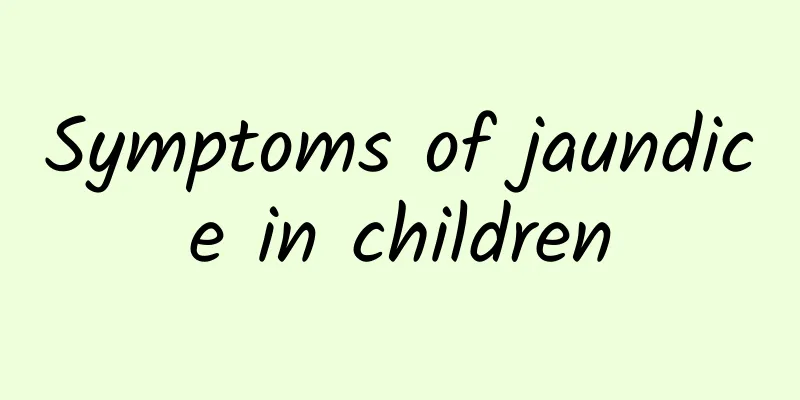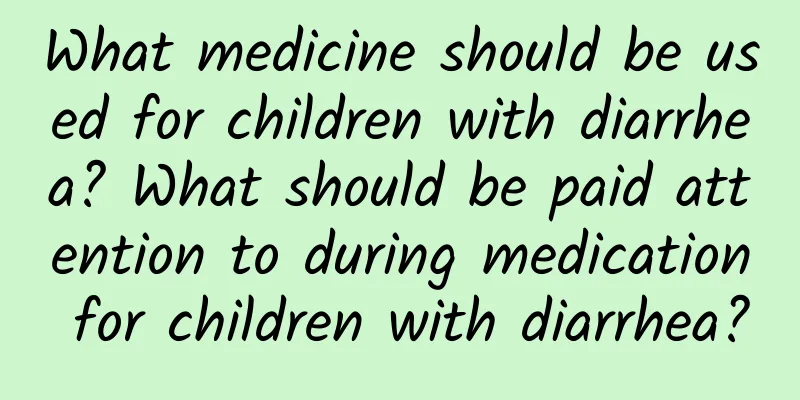Symptoms of jaundice in children

|
As we all know, many newborns will have jaundice within 24 hours after birth. Many parents are not confused about this. In fact, this may be the occurrence of neonatal hemolytic disease. Neonatal jaundice is actually not easy to be detected in the early stage, but it will have some symptoms. Everyone should understand them so that they can be treated effectively in time. Medical history 1. Time of onset of jaundice: If jaundice occurs within 24 hours after birth, neonatal hemolytic disease should be considered first, followed by congenital infections such as cytomegalovirus infection; if jaundice occurs 2 to 3 days after birth, physiological jaundice is the most common, and ABO hemolytic disease should also be excluded; if jaundice occurs 4 to 7 days after birth, sepsis and breast milk jaundice are more common; if jaundice occurs after 7 days, sepsis, neonatal hepatitis, biliary atresia, breast milk jaundice, spherocytosis, etc. are all possible. 2. In the process of jaundice, neonatal hemolytic disease develops fastest, followed by sepsis. Neonatal hepatitis and biliary atresia develop slowly and last longer. 3. The color of stool and urine: Very light or grayish white stool and dark urine indicate the possibility of neonatal hepatitis or biliary atresia. 4. Family history: Patients with favism in their family should consider whether they have G6P-D deficiency; patients whose parents have hepatitis should rule out hepatitis. 5. Pregnancy history, delivery history (premature rupture of membranes and prolonged labor indicate possible intrapartum infection), mother’s medication history before delivery, etc. Clinical symptoms 1. Physiological jaundice: In mild cases, jaundice first appears on the face and neck, then spreads to the trunk and limbs. It is usually slightly yellow, and the sclera may be slightly yellow, but the palms and soles are not yellow. It disappears after 2 to 3 days, and the skin color returns to normal on the 5th to 6th day. In severe cases, jaundice first appears on the head and then on the feet, and spreads to the whole body. Vomitus and cerebrospinal fluid may also turn yellow, which can last for more than 1 week, especially for some premature infants. It can last until the 4th week. The color of urine and stool is normal, and there is no bilirubin in the urine. Very light or grayish-white stool and dark urine indicate neonatal hepatitis or biliary atresia. 2. The color of jaundice is light pink in mild cases and darker in severe cases, but the skin is rosy with red in yellow. 3. Jaundice is mostly found on the face, neck, sclera, trunk and proximal limbs, usually not exceeding the elbows and knees. 4. Neonates with physiological jaundice are generally in good condition, without anemia, no hepatosplenomegaly, normal liver function, and no kernicterus. 5. Physiological jaundice is more common in premature infants than in full-term infants, and may appear slightly later by 1 to 2 days. The jaundice is more severe and disappears later, which may last up to 2 to 4 weeks. 6. Pathological jaundice often appears within 24 hours after birth, lasting more than 2 weeks, and more than 3 weeks in premature infants; jaundice disappears after birth, reappears and progressively worsens. Severe jaundice can be combined with kernicterus. In addition, due to different causes, there are often accompanying symptoms of the primary disease that causes jaundice. The birth of a newborn is something that many expectant parents are very excited about, but the child’s immune ability at this time is almost zero and cannot resist the invasion of foreign diseases. Parents must always pay attention to the child’s physical condition after the child is born to prevent the occurrence of jaundice from endangering the child’s health. |
>>: What can you do to prevent jaundice?
Recommend
What are the symptoms of hand, foot and mouth disease in children?
During the high incidence of hand, foot and mouth...
What are the clinical examination methods for acute laryngitis in children?
What are the methods for clinical examination of ...
What are the side effects of taking collagen? What are the effects and functions of collagen?
Since collagen is very important to human health,...
What to do if a newborn has jaundice and has favism
Parents should pay great attention to neonatal ja...
Which hospital is better for treating acute laryngitis in children?
Many patients are unfamiliar with how to choose a...
Notes on the diet for children with kidney disease
Since immune dysfunction can easily lead to kidne...
What are the symptoms of infant jaundice hepatitis
Symptoms of jaundice in infants include yellowing...
What vaccines are there for pneumonia in children?
There are currently 7-valent pneumococcal vaccine...
Is the baby's cough and fever pneumonia?
Pneumonia in children is relatively common and is...
What are the symptoms of high jaundice in babies?
Infant jaundice may cause yellowing of the skin a...
What are the auxiliary examinations for Kawasaki disease?
Many parents hope that their children can live a ...
What are the examinations for pediatric hernia? What are the types of pediatric hernia?
Some parents may find that their children have pe...
How to treat patent ductus arteriosus in newborns
Patent ductus arteriosus (PDA) is a common congen...
What are the symptoms of neonatal hepatic jaundice?
Neonatal hepatic jaundice is caused by abnormal b...
Examination of pneumonia in children
Neonatal pneumonia is the most common infectious ...









